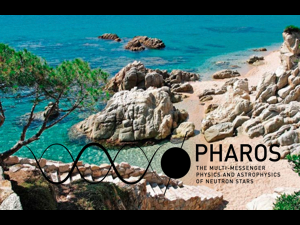Speaker
Prof.
Sergey Popov
(Sternberg Astronomical Institute, Lomonosov Moscow State University)
Description
Several candidates for accreting magnetars have been proposed recently by different authors. Existence of such systems contradicts the standard magnetic field decay scenario where a large magnetic field of a neutron star reaches a few $\times 10^{13}$ G at agees $>$ Myr. Among other sources, the high mass X-ray binary 4U0114+65 seems to have a strong magnetic field around $10^{14}$ G. We develop a new Bayesian estimate for the kinematic age and demonstrate that 4U0114+65 has kinematic age 2.4-5 Myr since the formation of the neutron star. We discuss which conditions are necessary to explain the potential existence of magnetars in accreting high-mass binaries with ages about few Myrs and larger. Three necessary ingredients are: the Hall attractor to prevent rapid decay of dipolar field, relatively rapid cooling of the crust in order to avoid Ohmic decay due to phonons, and finally, low values of the parameter Q to obtain long Ohmic time scale due to impurities. If age and magnetic field estimates for proposed accreting magnetars are correct, then these systems set the strongest limit on the crust impurity for a selected sample of neutron stars and provide evidence in favour of the Hall attractor.
We also propose that recently discovered radio pulsar J0250+5854 with 23.5 sec spin period is presently at the Hall attractor stage. This can explain low temperature and absence of magnetar-like activity of this source together with its spin period and period derivative. We present results of calculations of the evolution of this source in a simple model of magnetic field decay. The neutron star could start its evolution as a magnetar with initial field $\sim 10^{14}−10^{15}$ G for realistic range of parameter Q describing crust imperfections. Future measurements of surface temperature and age of this neutron star might help to probe this hypothesis.
Primary author
Prof.
Sergey Popov
(Sternberg Astronomical Institute, Lomonosov Moscow State University)
Co-author
Dr
Andrei Igoshev
(Technion)

